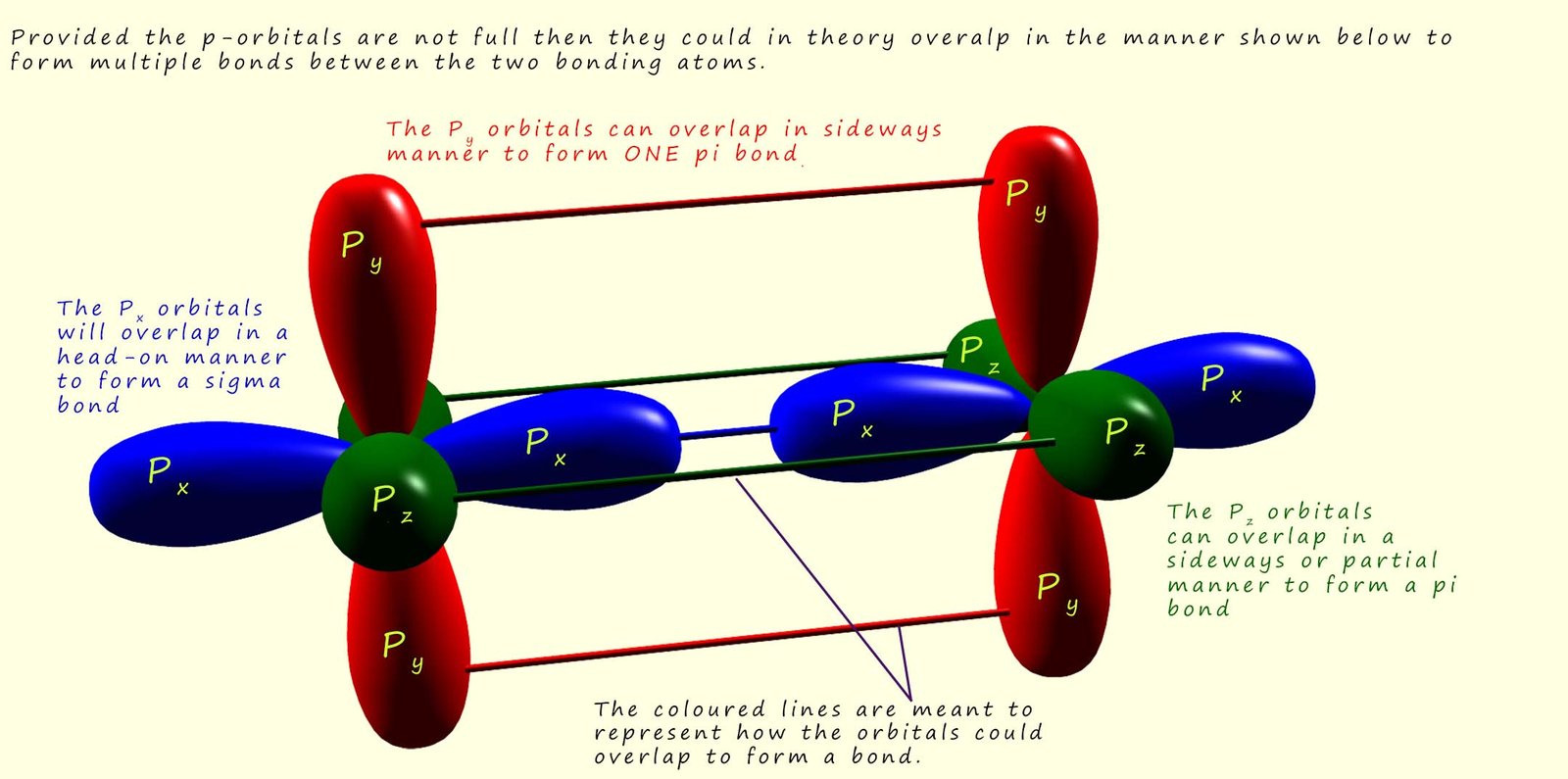
Covalent bonds can be considered as either sigma (σ) or pi (π) bonds. The difference between these two types of covalent bonds is due to the way in which the atomic orbitals on each atom involved in forming the covalent bond overlap with each other during bond formation.
As an example consider what happens when two hydrogen atoms combine to form a molecule of hydrogen (H2). Hydrogen atoms contain a single electron and have an electronic configuration of 1s1; so when two hydrogen atoms react to form a covalent bond between the two 1s orbitals which contain the electrons will overlap with each other and form a covalent bond between the two atoms. When the two 1s orbitals overlap or merge with each other they will form new molecular orbitals; which will contain the 2 electrons present in the hydrogen molecule. This is shown below.
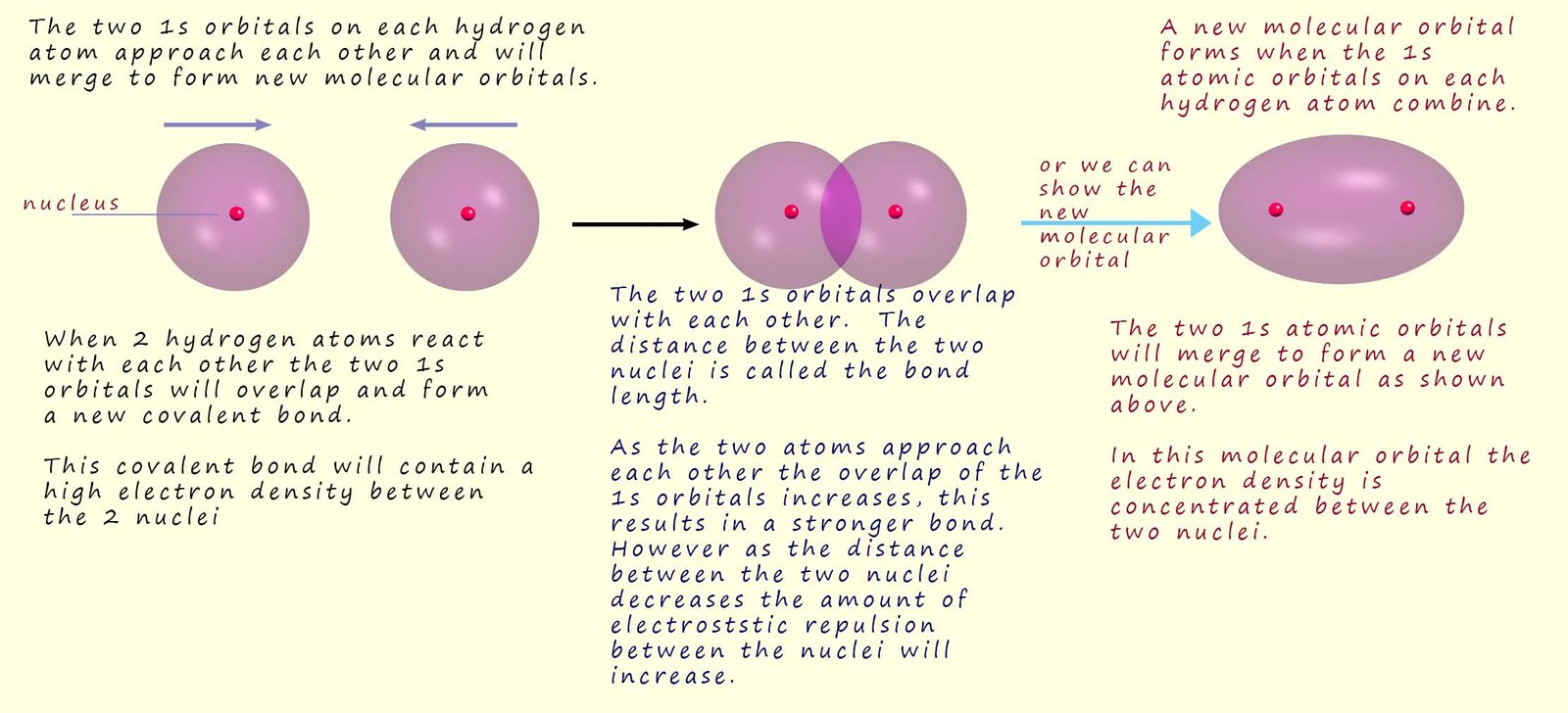
The covalent bond formed between the two hydrogen atoms was formed by the head-on overlap of the 1s orbital. Covalent bonds which are formed by this head-on overlap of atomic orbitals are also called sigma (σ) bonds.
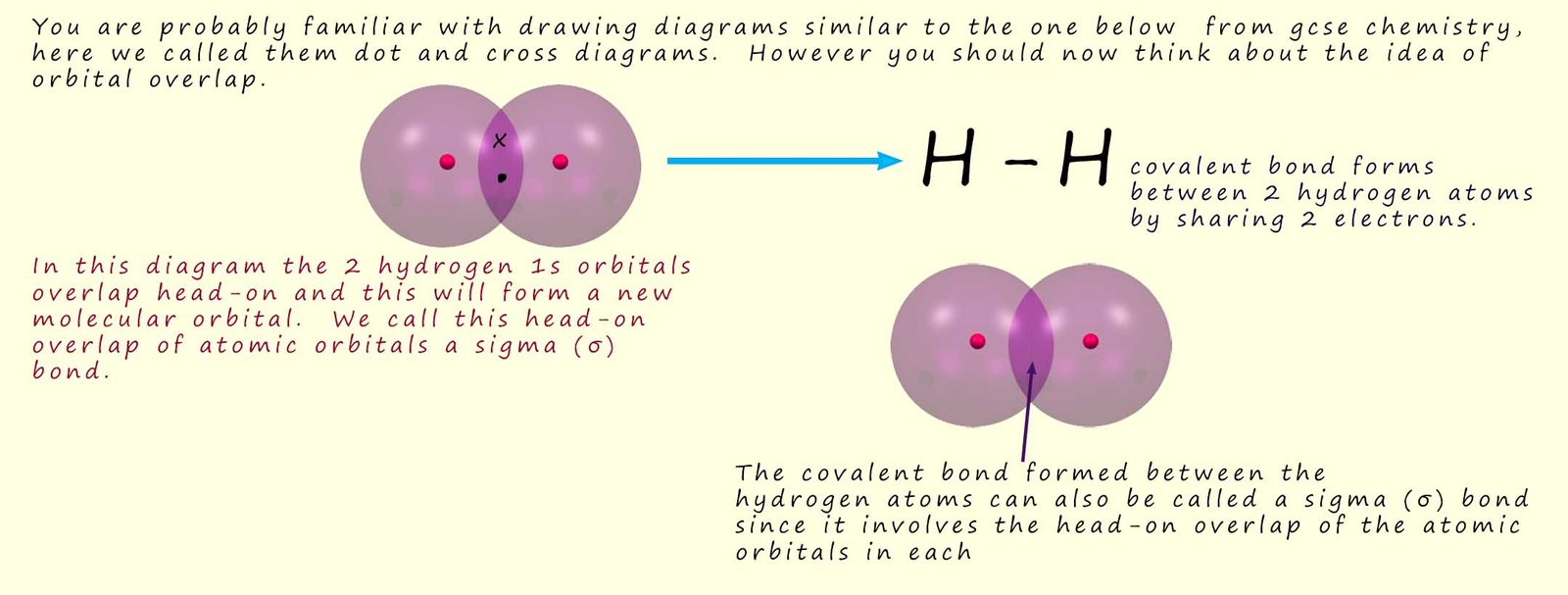
When a hydrogen molecule is formed a covalent bond forms between the 2 hydrogen atoms by the head-on overlap of two 1s-orbitals. This resulted in the formation of a sigma bond. However sigma bonds can also form when orbitals other than s-orbitals overlap. P-orbitals can also overlap in a head-on manner to form sigma bonds. Recall that there are 3 p-orbitals; px, py and pz with each orbital arranged along each of the x, y and z-axes as shown below:
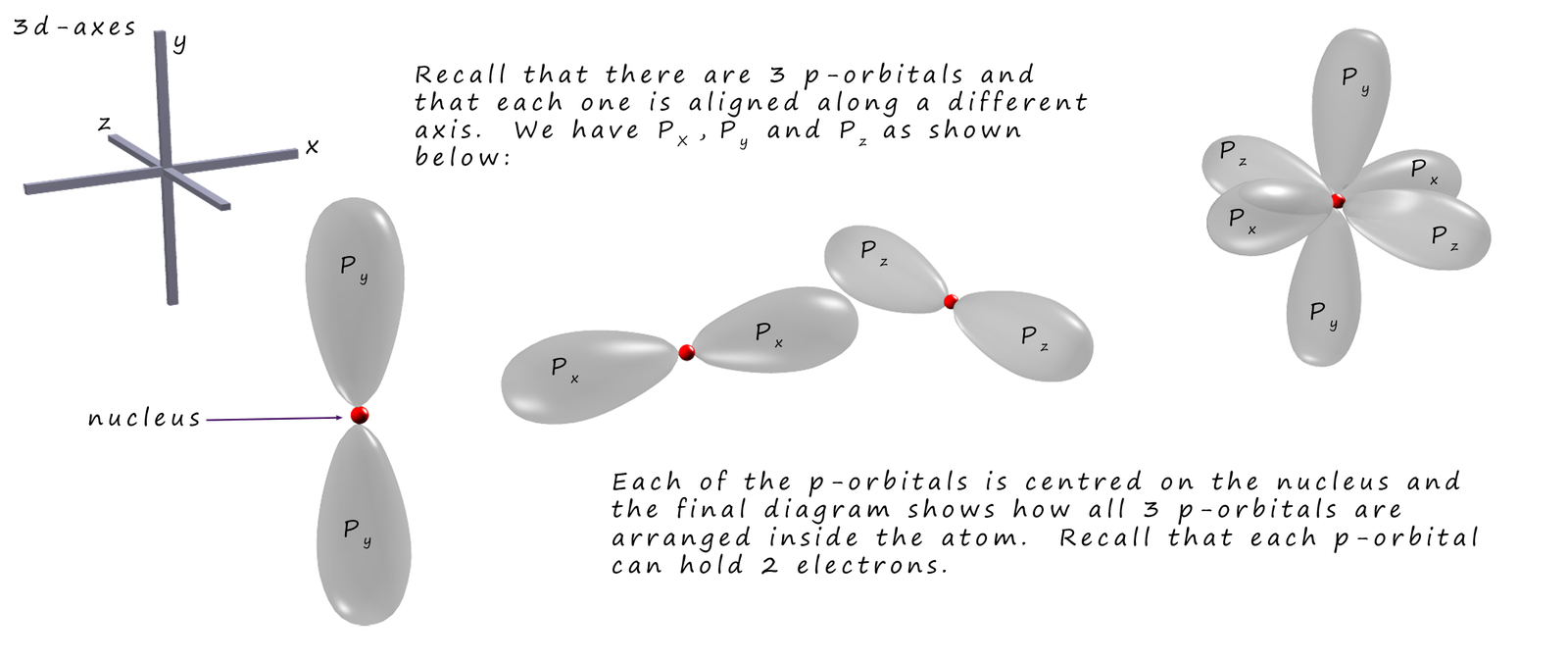
Fluorine has an atomic number of 9 and an electronic configuration of 1s22s22p5 or 1s22s22p2z 2py22px1. There are 5 electrons in the outer valency 2p electron sub-level, so fluorine is able to make one covalent bond in order to fill its outer sub-level and end up with the noble gas 2p6 electron configuration. Fluorine gas (F2) like hydrogen gas consists of a diatomic molecule with a single covalent bond between the fluorine atoms. To completely fill the outer 2p sub-level each fluorine atom will form a covalent bond by a head-on overlap using the p-orbital which contains the 1 unpaired electron; that is it will form a covalent sigma bond by overlapping these two p-orbitals. This is shown in the image below:
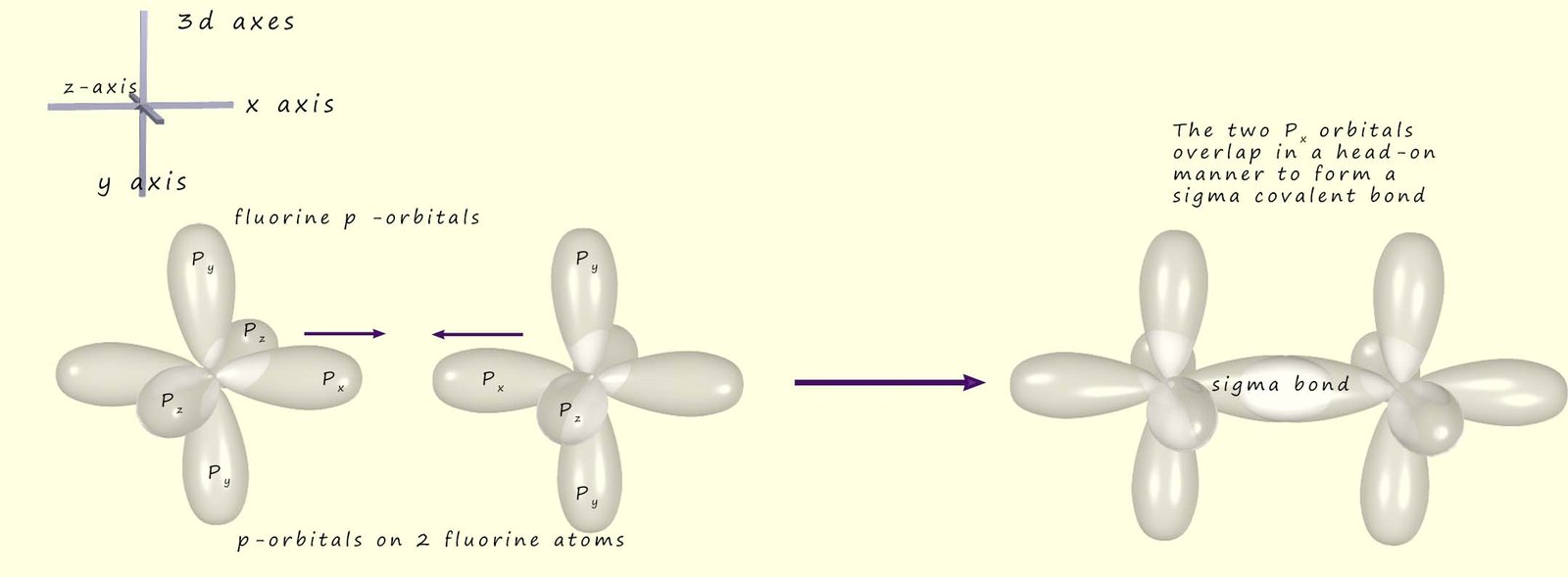
As we have seen above the p-orbitals can overlap in a
head-on manner to form a sigma bond. However there is another
way in which the the p-orbitals can overlap to form a
covalent bond. Instead of the p-orbitals overlapping in a
head- manner
they can overlap in a sideways manner; this sideways
overlap results in the formation of a new type of covalent bond called a
pi (π) bond. This is shown below:
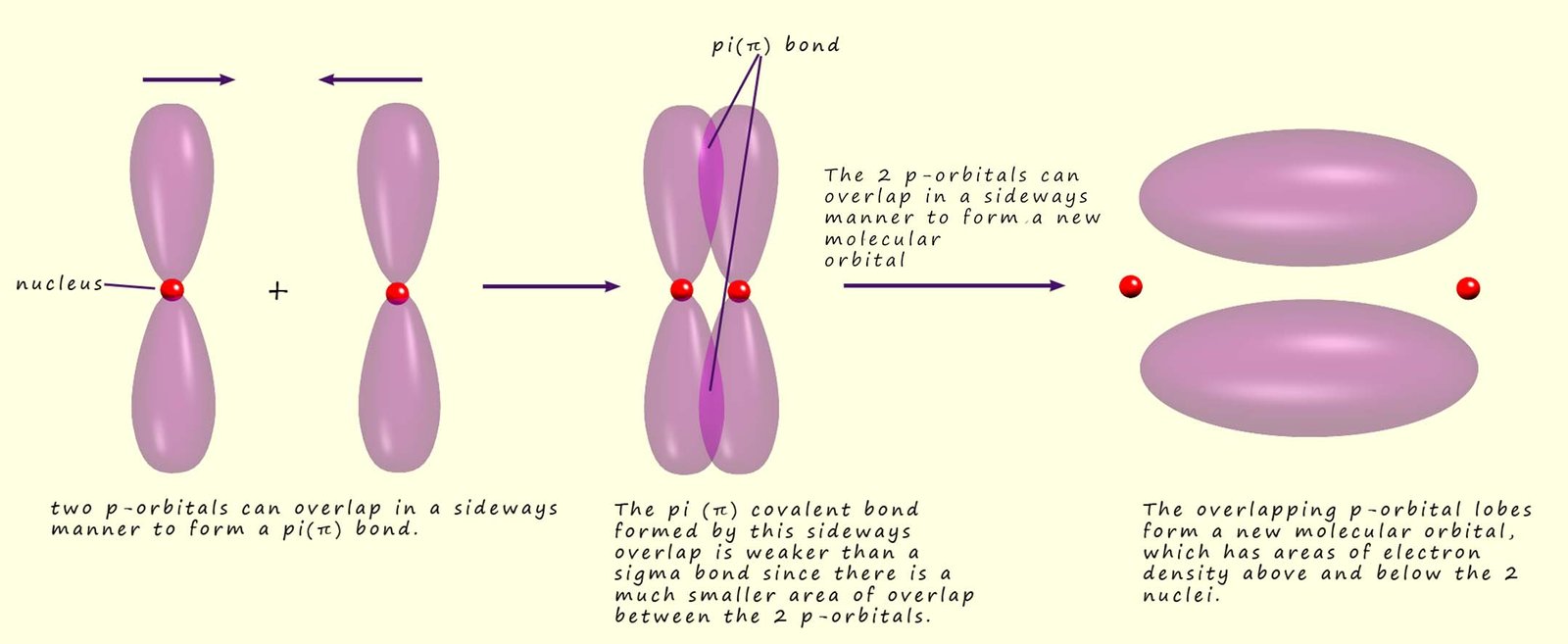 A pi(π) bond has a smaller area
of overlap between the p-orbitals than a
sigma bond which means
a weaker covalent bond. In many molecules with double
and even triple bonds you are likely to find that the covalent bonds
between the atoms in the molecule will contain a mixture of sigma
and pi bonds.
A pi(π) bond has a smaller area
of overlap between the p-orbitals than a
sigma bond which means
a weaker covalent bond. In many molecules with double
and even triple bonds you are likely to find that the covalent bonds
between the atoms in the molecule will contain a mixture of sigma
and pi bonds.
The bonding present in molecules with single covalent bonds is likely to be a sigma bond, where there is full head-on overlap of the atomic orbitals. However in molecules which have multiple bonds such as double or triple bonds then the covalent bonds between the atoms in the molecule will be a mixture of sigma and pi bonds. This is shown below:
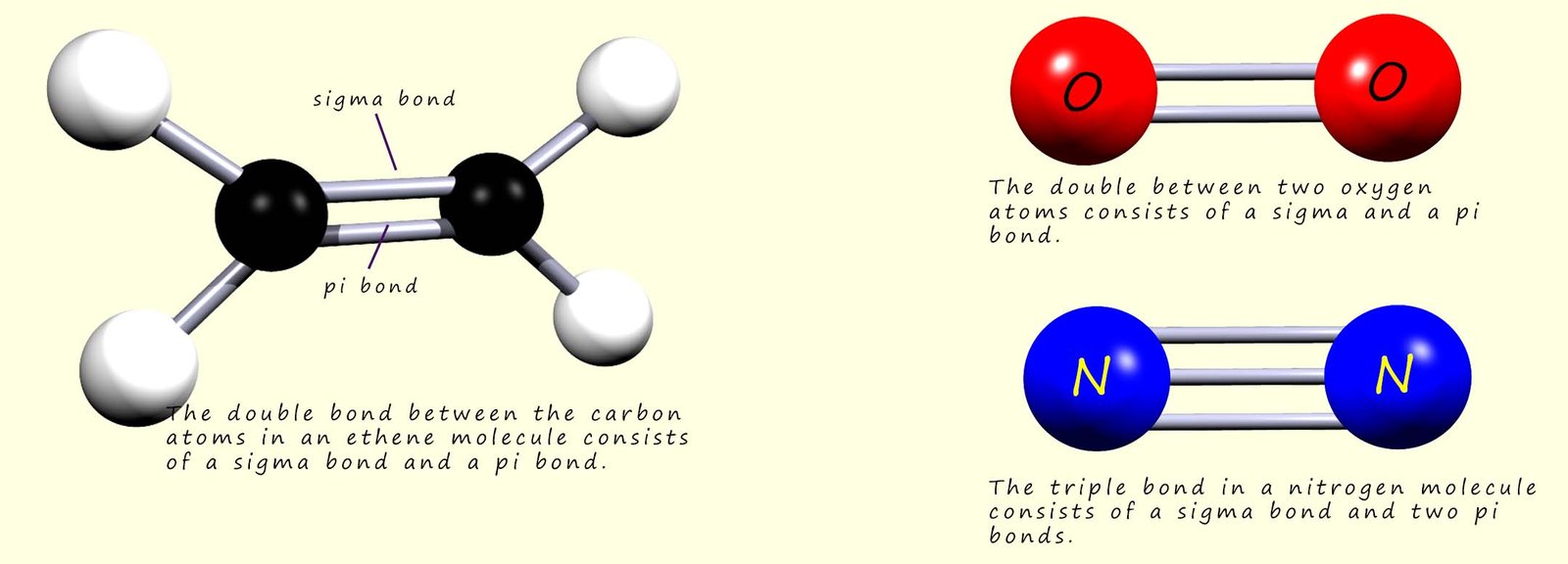
A possible way in which p-orbitals which contain only one electron could overlap and form sigma and pi covalent bonds is shown below.
